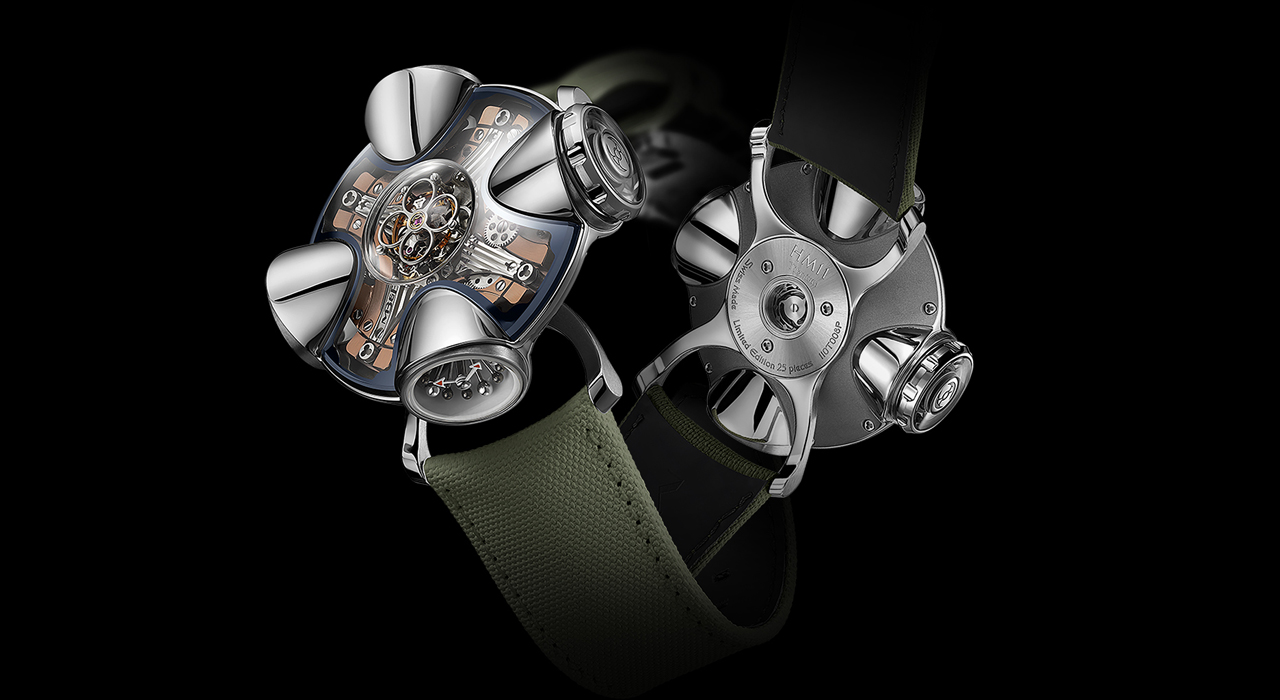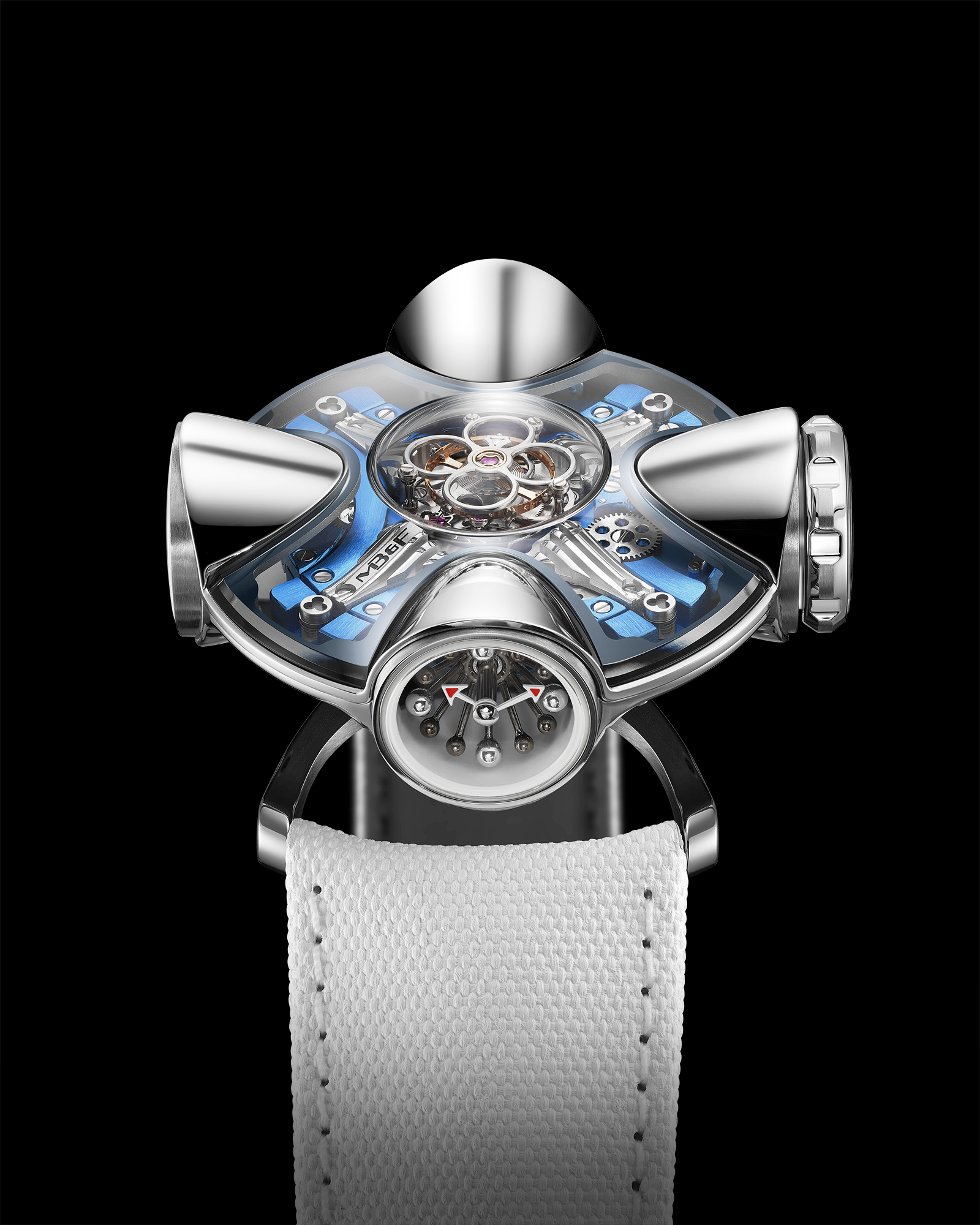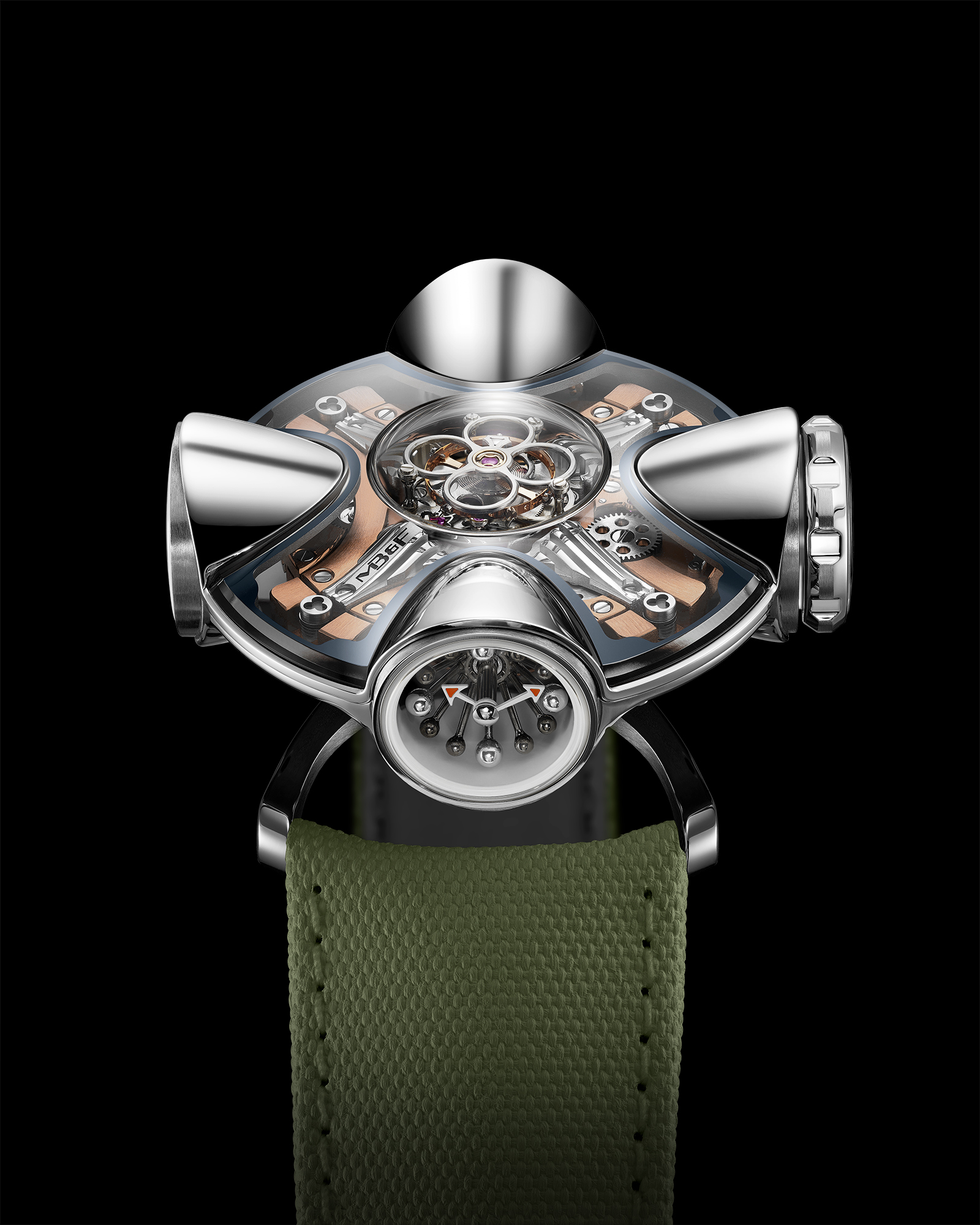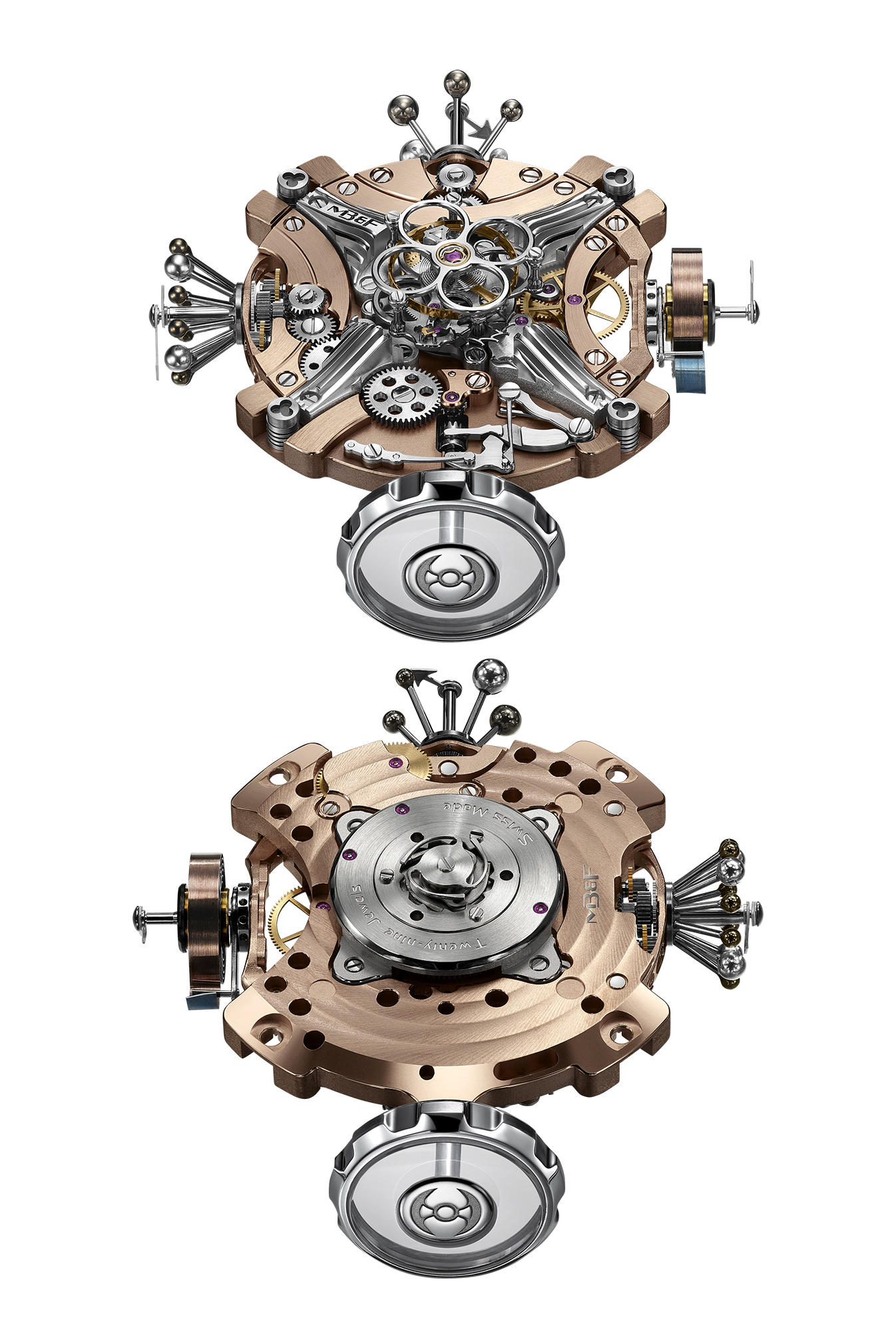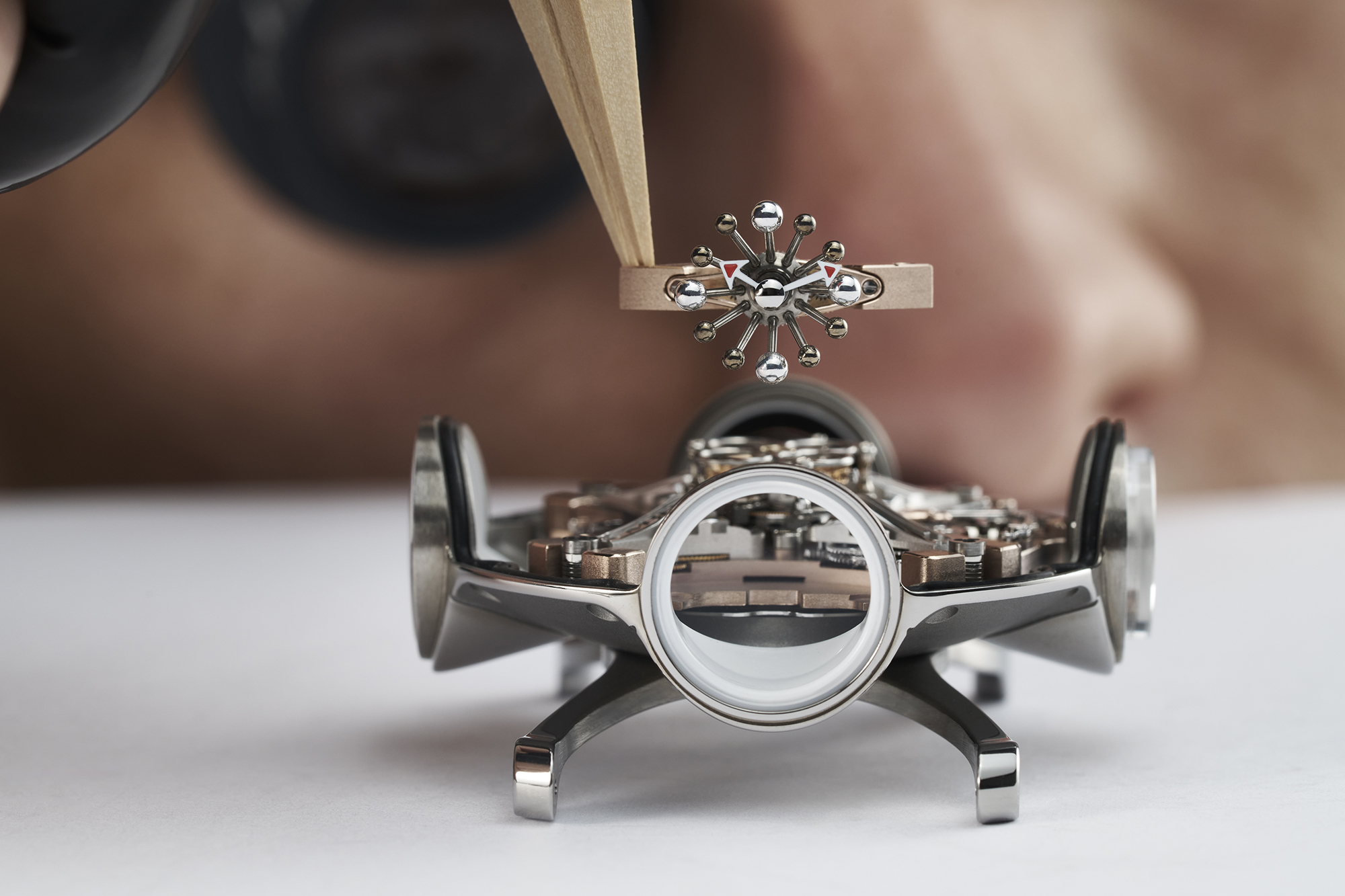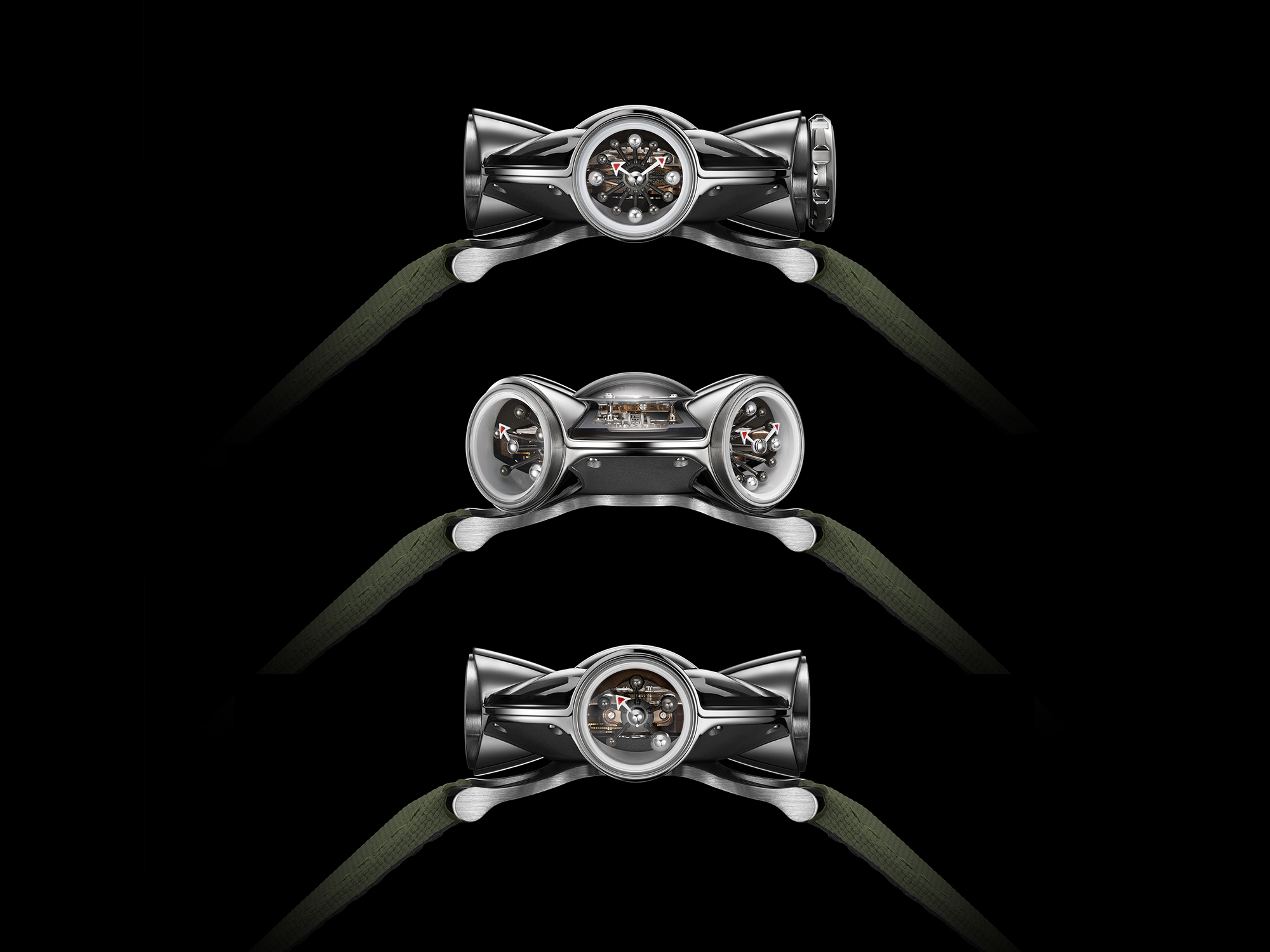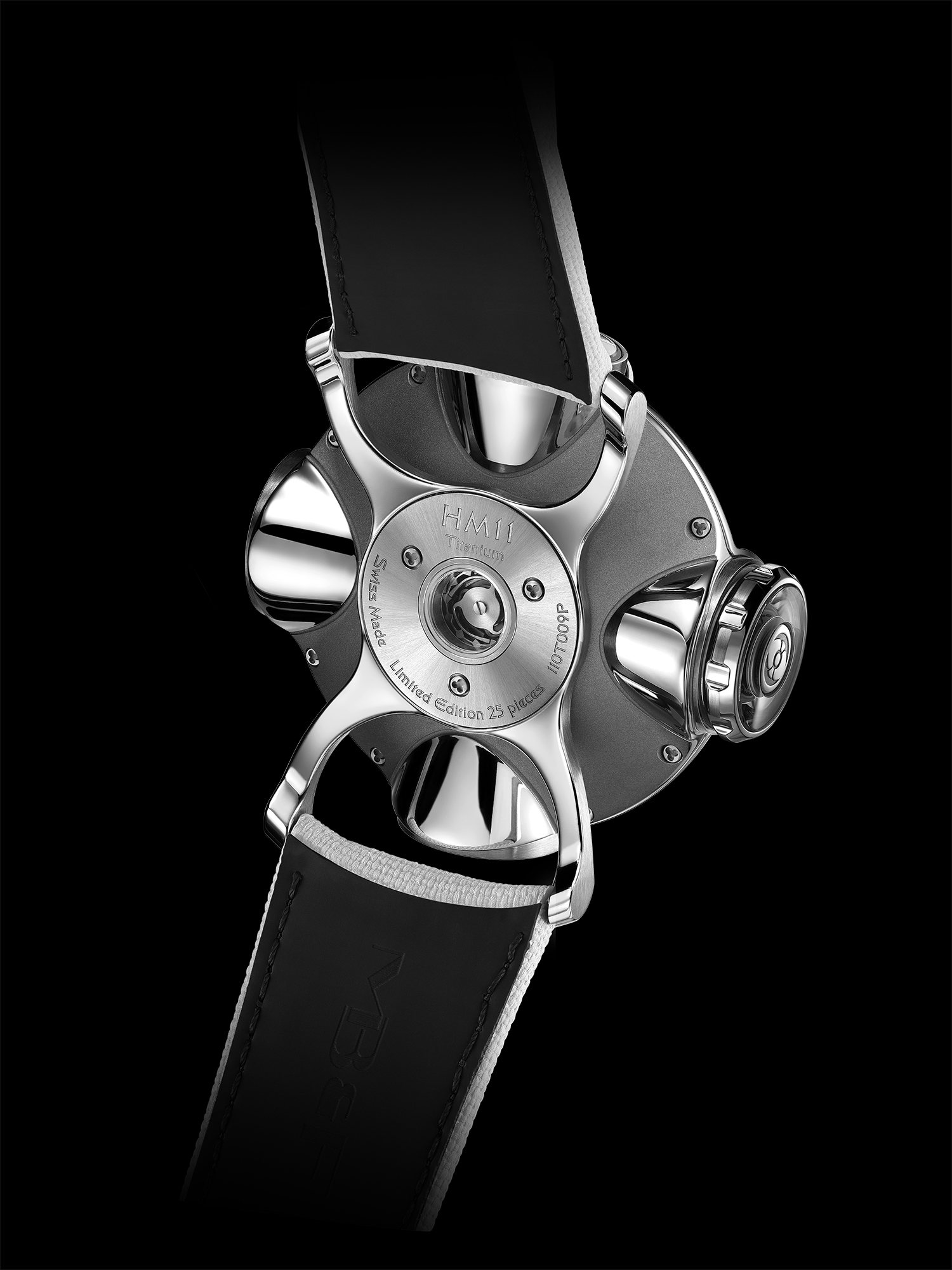The 1960s through to the 1980s, saw architecture take a psychedelic turn, blending the sleek lines of mid-century with a dash of disco flair.
In Europe, the avant-garde spirit continued to thrive, producing homes that were not just buildings but statements.
Meanwhile, in the desert landscapes, iconic structures etched their place in architectural history.
European architects, undeterred by tradition, embraced a new wave of design.
Picture the futuristic brilliance of Antti Lovag’s Palais Bulles (Bubble Palace) in France, resembling a cluster of orbs suspended in time.
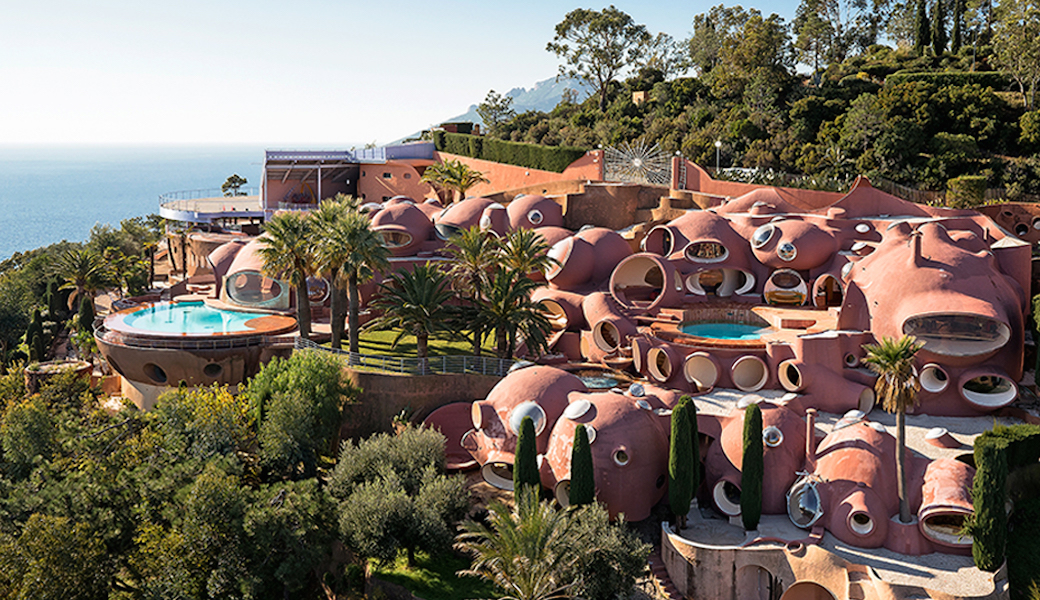
Its organic, rounded forms defy convention, a testament to the era’s rejection of straight lines and rigid norms.
If we head into the desert, we find the timeless allure of structures such as John Lautner’s Elrod House in Palm Springs – a model of circular living based on a conical dome fanning out in a series of petals that played a cameo in James Bond classic Diamonds Are Forever (1971).
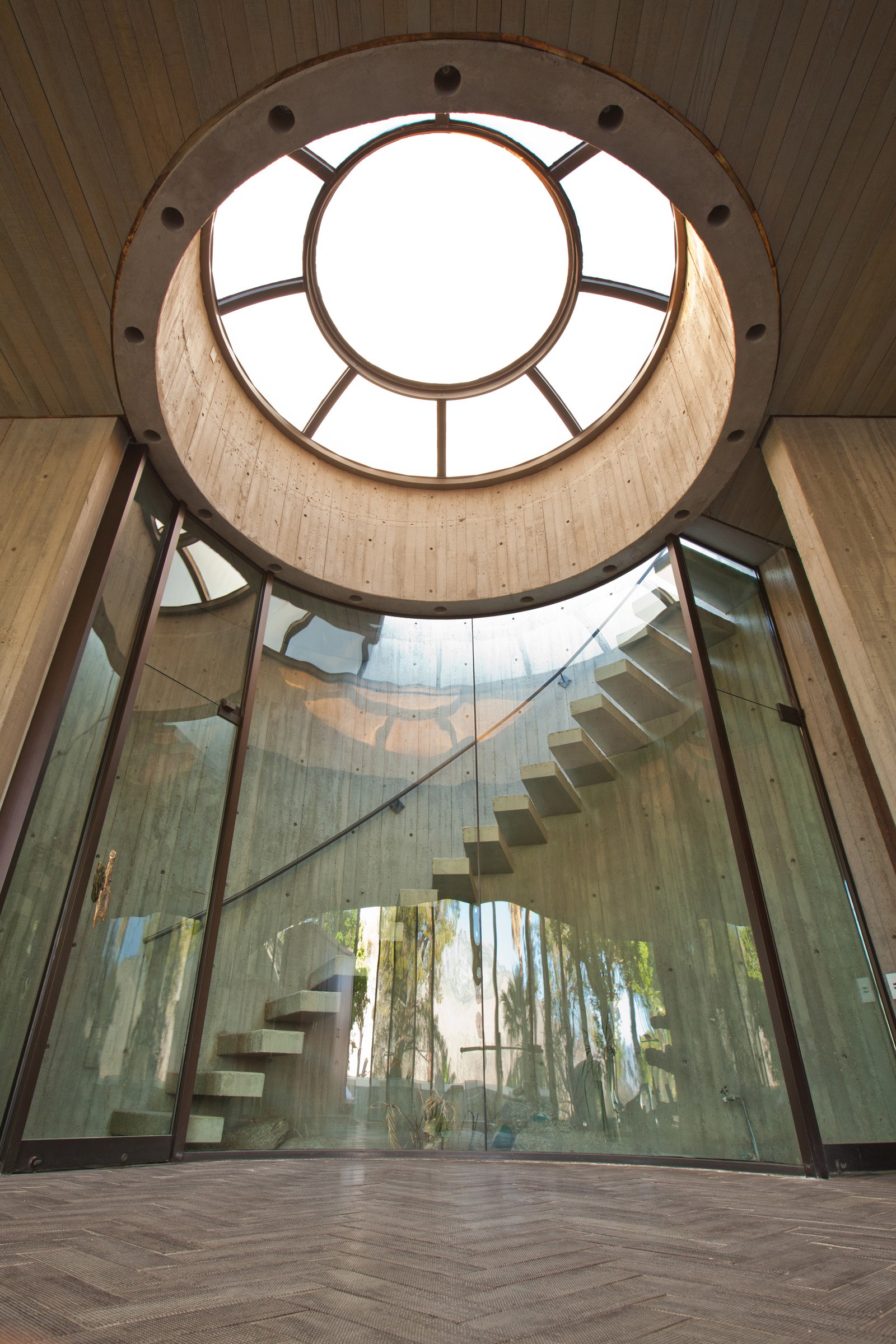
The geometric marvel seamlessly integrated into the arid surroundings, its open spaces and futuristic design reflecting the era’s obsession with innovation.
Meanwhile, in Boulder, Charles Haertling built the Brenton House (1969), one of about a half-dozen Colorado buildings chosen to represent life in the future for Woody Allen’s film Sleeper.
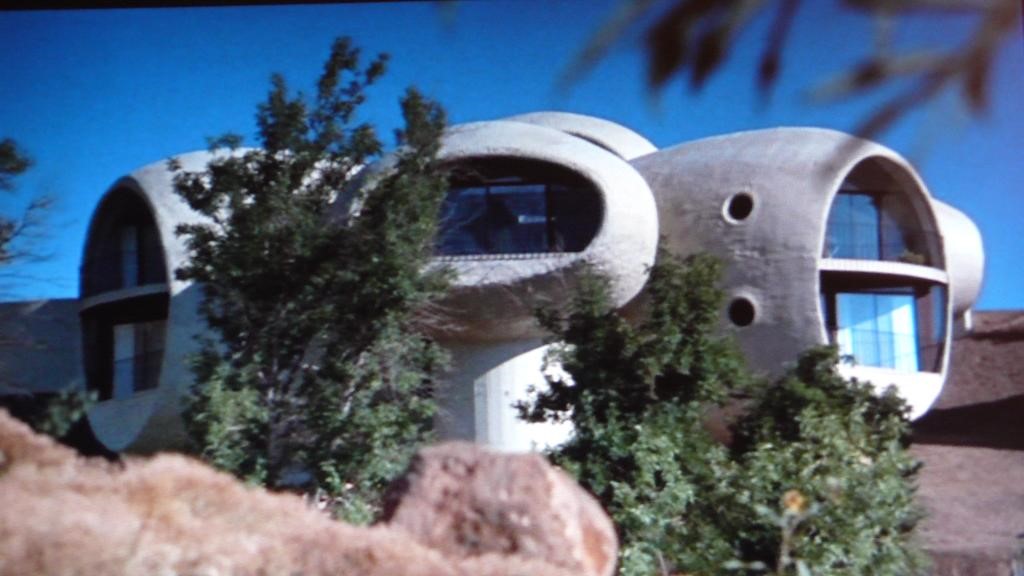
Inspired by barnacles, and sometimes named the ‘Mushroom’ house because of the pods or rooms that radiate from its central hub, Haertling was creating a living space that was both functional and visually striking, experimenting with new materials and unconventional forms, pushing the boundaries of what was considered traditional.
But the era was more than one of architectural experimentation; it was a rebellion against the status quo.
From the European avant-garde to the desert escapades reminiscent of James Bond’s adventures, these homes weren’t just shelters; they were bold statements, capturing the zeitgeist of a revolutionary period in design.
Just as the architecture of the 1970s epitomised a departure from convention, MB&F’s wristwatch design channels the spirit of that era with a fusion of bold innovation and a nod to the unconventional.
The avant-garde ethos of the time was matched by timepieces that defied the traditional norms of horology in terms of case shape, materials and colour palettes.
MB&F Horological Machine Nº11
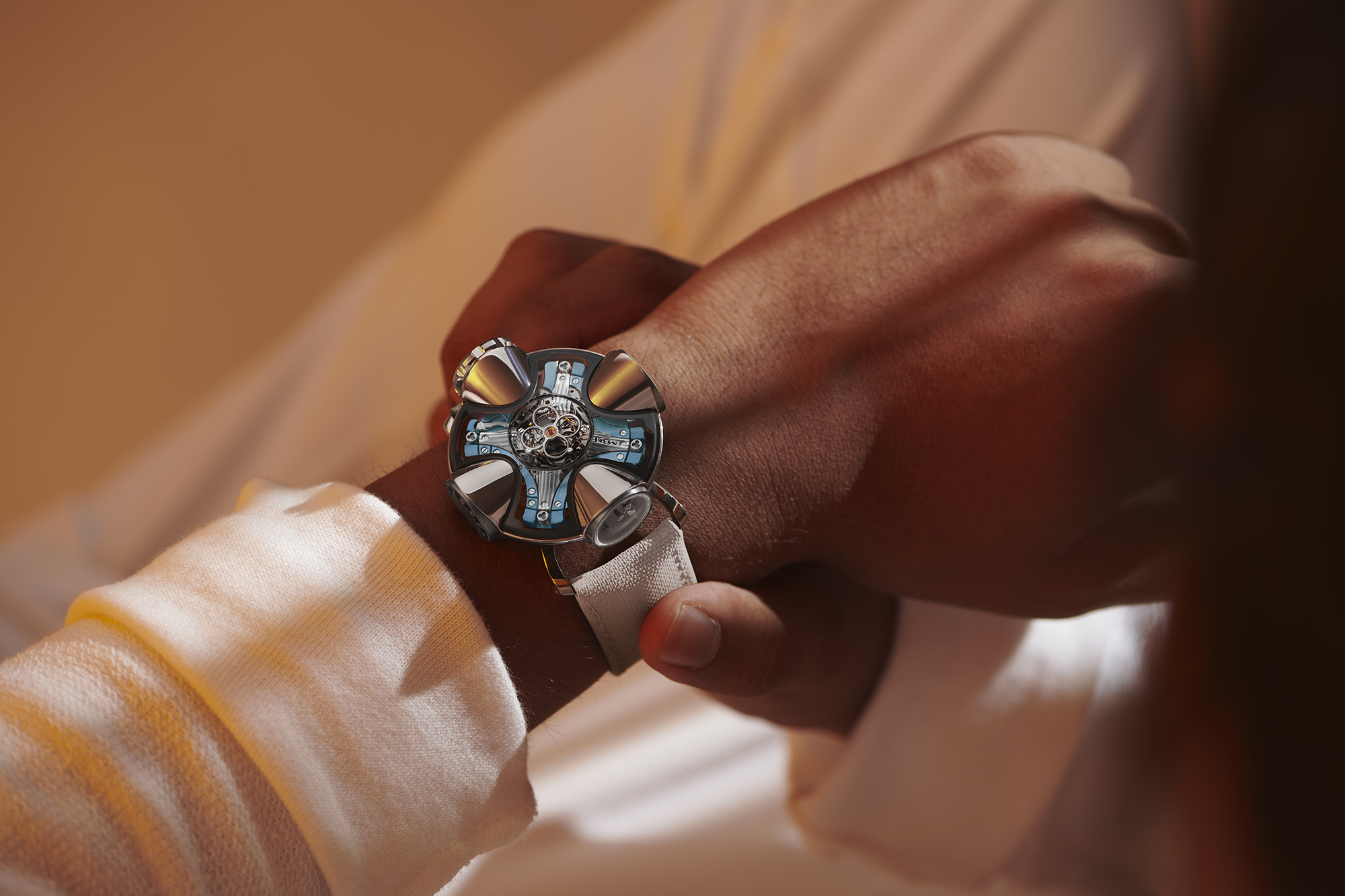 And Horological Machine Nº11 Architect has, for the first time in the brand’s history been consciously inspired by the modular nature of neo-brutalist architecture.
And Horological Machine Nº11 Architect has, for the first time in the brand’s history been consciously inspired by the modular nature of neo-brutalist architecture.
Just as the Brenton House in Colorado harmonises with its rocky surroundings, the sleek, futuristic aesthetic of Horological Machine Nº11 echoes the 1970s spirit of pushing the boundaries of what is possible.
Moreover, the era’s fascination with unconventional timekeeping is mirrored in a modern mix of traditional complications.
Avant-garde features like the four orbital displays defy the conventional expectations of a watch, marrying form and function, tradition and rebellion.
While all previous MB&F horological designs have famously been based on founder Max Büsser’s childhood memories of futuristic toys focusing on sci-fi and space exploration, nature and animals and mechanical art, MB&F’s latest creation is a tribute to late-1960s architecture.
“I can put the development of the Horological Machine Nº11 Architect down to Mike Tay [group managing director of luxury watch retailer, The Hour Glass],” says Mr Büsser.
“One day, around 2018, I was with him and he looked at me and said ‘You’re becoming predictable. All your stuff is based on your childhood and I can end your speeches for you.’ Predictability is one of the biggest turn-offs for me and thanks to that conversation, HM 11 was born,” he continues.
“It is not based on my childhood. It’s based on something else that I’m really interested in: architecture. I was brought up in Europe, which was basically wiped out during the Second World War. I was born in 1967, so I was witness to cities that were built in 20 years and were pretty glum, drab places built of grey cement. But then, at the end of the 1960s, some crazy creative architects started to arrive.
“And these crazy, fun people remind me of my fellow watchmakers and myself in the early 2000s – Rolf Schneider with the Ulysse Nardin Freak, Richard Mille, Harry Winston’s Opus series… So when we arrived on the scene, it must have been a bit like when these architects arrived. Not all of the houses are practical, but who wouldn’t want to live in a work of art like them?”
And Mr Büsser cold have picked no better place to launch the watch than in the heart of his adopted desert home of Dubai in the middle of a new architectural experience known as ‘desert nesting’.
An innovative concept, curated by the architect Gianni Ranaulo, the Nest is a tranquil desert retreat with pod-like cabins that blend seamlessly into the surrounding sand dunes.
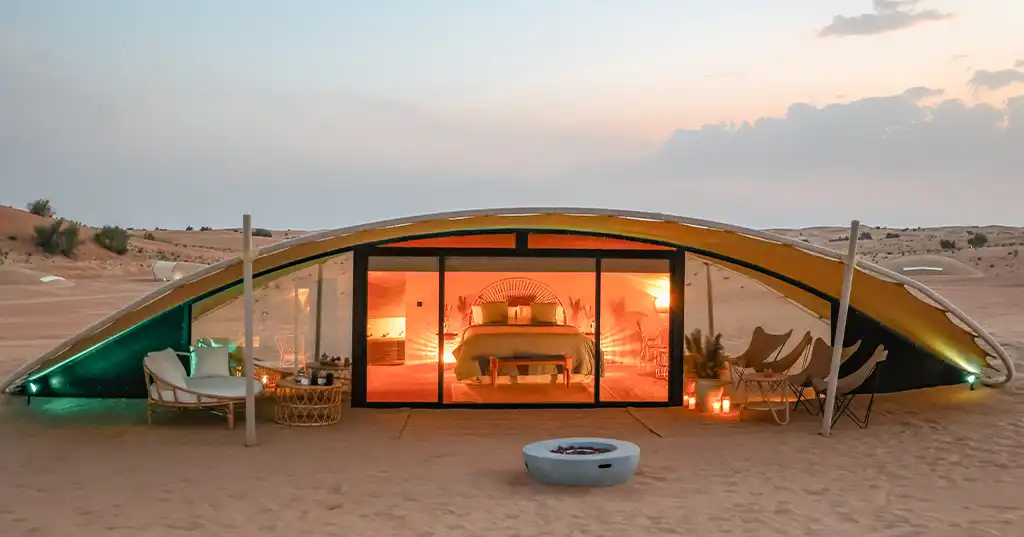
In the vision of all of these genius architects, MB&F has delivered a timepiece that transports people across different dimensions and times, making them not just accessories but experiences.
The Horological Machine Nº11 Architect, blurs the distinction between a house and a watch, its central flying tourbillon, reminiscent of cathedral windows, sits under a double-domed sapphire crystal, while the four satellite ‘rooms’ that grow out from the middle, rotate on the main foundation, offering a dynamic and energy-efficient display.
“I’m probably the only person on earth that, when he sees the Brenton house, thinks this could be a cool watch,” laughs Büsser as he explains why he decided to view a watch as a house.
Each room in the HM11 Architect serves a unique purpose, from displaying time to housing a mechanical thermometer (“because it’s a house so you need to have a thermometer and this one actually gives you the room temperature not just your body temperature”), indicating power reserve or hosting a transparent setting crown that enables a direct view into the movement.
Using futuristic materials like titanium and sapphire crystal, the watch case’s integrity is maintained through 19 gaskets, ensuring a water resistance of 2ATM.
Despite its 3D architectural design, the HM11 case maintains a sleek 42mm diameter, providing comfort and stability on the wrist.
The heart of the HM11 engine is dedicated to optimising power and efficiency.
Winding this timepiece can occur both incidentally and intentionally, as the winding action has been cleverly relocated from a petite crown to encompass the entire case.
So as the wearer switches between ‘rooms’, each 45° clockwise turn, channels 72 minutes of power directly into the barrel.
Upon completing 10 full rotations, the HM11 achieves its peak autonomy of 96 hours. This strategic design choice not only amplifies torque but also facilitates a rapid and efficient rewind, requiring just 10 complete clockwise rotations.
“It would be a little bit pointless to have a watch where you can only see one dial,” Büsser says, explaining the rotating watch head.
“The whole point with HM 11 Architect is that you can actually turn the watch. Then we went to the engineers and they said ‘wouldn’t it be cool if we could wind the watch when you turn it? And that is what we did.”
“It’s a 364-component movement, which is very complex. The case alone has 92 components. And the movement cannot be assembled and then dropped into the case – there is not enough space. The heart of the movement which has already been tested is put in and then the watchmaker has to add the different ‘modules’.
Additionally, the flying tourbillon, a signature element of MB&F, incorporates a full-system dampener with high-tension suspension springs, offering general shock protection to the entire movement. The inclusion of a mechanical thermometer, running on a centuries-old principle, adds a novel and unusual touch to this avant-garde timepiece.
“The past 18 years have been quite an adventure,” says Büsser. “At the beginning of MB&F I was just trying stuff. Now, I actually have a better focus on what I want.”
There are two versions of the watch, in sapphire and titanium, one with a blue-PVD coated movement, the other with a red-gold PVD coating. There will be 25 of each and it will take 18 months to complete all 50 pieces.
The price will be CHF 198,000 plus taxes.

